A Month With Chrome OS and Pixelbook
- Mehedi Hassan
- Oct 09, 2018
-
30
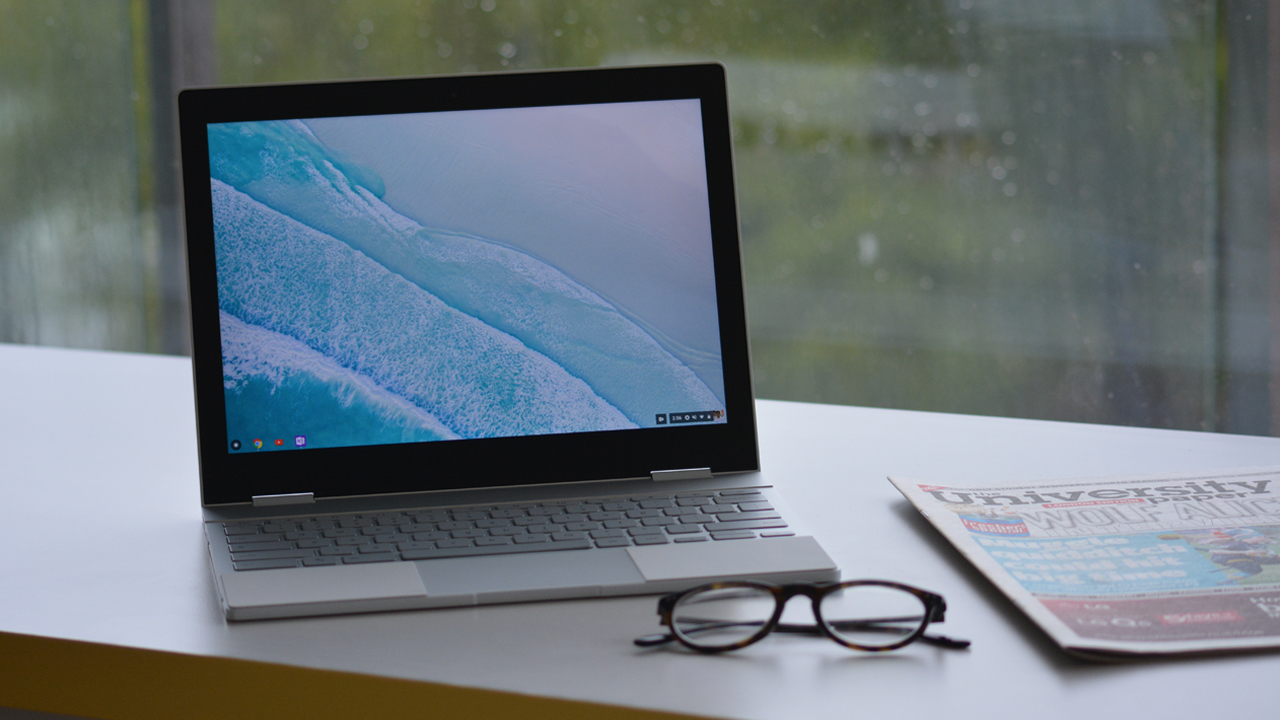
Right, Chromebooks.
There’s a huge dilemma surrounding Google’s Chromebooks. When they first launched, they were only capable of running websites on Google’s Chrome browsers. Google made a huge bet on its browser-based and affordable laptops that were meant to let you do a ton of things from the browser. In reality, that was never the case. Good web apps back then were quite hard to find, and a major limitation of Google’s Chromebook devices was the fact that you needed a working internet connection all the time.
Fast forward a few years later, the Chromebook platform has come a long way. It can now run Android apps, and it’s even getting support for running Linux apps. From only being able to run web apps to running Android and Linux apps, the journey has been a long, bumpy road for Google.
Windows Intelligence In Your Inbox
Sign up for our new free newsletter to get three time-saving tips each Friday — and get free copies of Paul Thurrott's Windows 11 and Windows 10 Field Guides (normally $9.99) as a special welcome gift!
"*" indicates required fields
None of that stopped the company and its partners from building hardware, though. Almost every year, there’s a bunch of new Chromebook hardware, ranging from affordable devices to premium products. Google is really the only main company building premium Chromebook devices with the Pixelbook line, though.
In fact, the company is expected to launch new Pixelbook devices later today, and it’s the perfect time to give the Chromebook platform another closer look ahead of the launch of the new Pixelbook devices.
Google sent me a Pixelbook device a few months ago to try out, and I have been using the laptop for a few weeks now. This article is not a review by any means — instead, it’s more of a story outlining my experience with the device and the Chromebook platform as a student. I only recently started at my university, so the timing here was perfect. I have been using the device in multiple lectures and throughout my new—albeit tiring—student life, so here’s a look into how my experience has been with the platform.

Let’s get the hardware out of the way, to begin with. Pixelbook is a premium Chromebook device that’s essentially a flagship. It’s nowhere near how the majority of the Chromebook devices look or work. Unlike the majority of Chromebook devices, the Pixelbook has a beautiful, premium hardware design. It’s sturdy, really white, and pleasant to use. The two-tone look on the front of the device gives it a unique look, and the overall design itself is very thin. The thin design of the device makes it look absolutely adorable, which might be a little weird to say about a laptop, but the slim design of the device really does stand out.
The device packs a beautiful and bright 12.3-inch display that almost looks gorgeous, only if it wasn’t surrounded by the thick bezels. I also feel like 12.3-inches is quite a small display for such a premium device, so maybe a bigger size option for the next Pixelbook would be a good addition. The keyboard on the device is really nice, too, the keys are really pleasant to type on with a good key travel, but what I love about the keyboard is the palm rest. The silicone material for the palm rest on the Pixelbook feels impressively well to rest your hands on, it’s something I haven’t seen on any other laptops before. If you thought Microsoft’s Alcantara fabric on Surface devices was good, this is even better, minus all the trouble you need to go through to keep your Surface clean. I have seen multiple reports online where the Pixelbook’s palm rest did get dirty after a few months of use, but my device is completely clean after a month’s use. As for the trackpad, there’s nothing impressive to see here, other than that it’s decent for a Chromebook. I am a sucker for the force touch trackpad on Apple’s MacBook, and trackpads on every other laptop I try nowadays just feel years behind. Either way, if you are coming from a Windows laptop like a Surface, the Pixelbook’s trackpad should feel perfectly fine.
The hardware of the Pixelbook, to keep it short, is really nice. It has a unique look to it, it’s adorably small, and it feels good to use. The bezels around the display do ruin the look for me a bit, though you eventually get used to it and it doesn’t really matter a lot after a bit of use.

But let’s talk about the platform powering the Pixelbook and other Chromebook devices. Google has been quite bold at comparing Chromebook with Windows and Mac recently, with new ads making bold statements like “If you want a laptop you can count on. You Chromebook.” The ad campaign promotes a bunch of things Chromebook is supposed to be good at, while taking a shot and Windows and Mac for system errors, upgrade issues, and security problems. And that’s true to an extent.
If you are coming from Windows or Mac, a Chromebook will require a lot of getting used to. I personally use both Windows and Mac, and getting used to the Chromebook did take a bit of time. I didn’t even realize this laptop doesn’t have Caps Lock button until after 2 days of use. At first, I wasn’t a huge fan of the system and how everything worked. As I used the device more, it slowly grew on me and I started getting the hang of things. The core Chromebook experience is mostly based on the Chrome browser, so the experience is a lot like Windows or Mac if you spend most of your time on the browser.
To get the best out of your Chromebook, you really have to rely on a lot of web apps. Personally, I mostly use browser apps on a day-to-day basis. TweetDeck (with my Tweeten extension) works very well for keeping track of Twitter on the Pixelbook, and I simply use Thurrott’s CMS, WordPress, directly on the browser to post articles. Other Google apps like Gmail and YouTube are also supposed to be used directly from Chrome, so you get the exact same YouTube.com or Gmail.com experience like you do on other platforms, meaning there aren’t any added benefits of having a Google hardware.
Web apps in 2018 are really getting quite advanced, there are a bunch of cool things you can do on the web without having to actually open up a native app. Especially with new technologies like ServiceWorkers and push notifications, web apps can almost exactly look and work like native apps nowadays. The problem with all of this is that it is still quite difficult to actually find quality web apps for your specific use. Apps like Slack, Office Online, Polarr (photo editing) Feedly, Notion work exceptionally well for my personal needs, but you may have a hard time looking for more advanced web apps to meet your personal needs.
Things do get a little interesting when you move to Android apps, though.

Chromebook obviously doesn’t have a Start Menu like Windows, it instead has an app launcher. It’s essentially the home for all the Android (and soon Linux) apps you install on your Chromebook, as well as the usual web apps. The app launcher shows some of your frequent apps at first with a search bar that lets you search for apps on your device and the web, and expanding it opens up the full app launcher. The app launcher organises your apps by a grid UI, and it’s quite a task to organise. It’s like having to deal with the iOS homescreen on a laptop, especially when you are moving apps around and actually trying to organise all your apps. The app launcher is a little easier to use when you simply use the Pixelbook’s touchscreen to drag and drop things around, but if you are using the trackpad, it can get a little annoying to organise.
Plus, Android apps on the Pixelbook are all sorts of weird. Don’t get me wrong, Google has done a massive job by bringing Android apps to Chromebooks. I mean, being able to use the fantastic Outlook for Android client on the Pixelbook is really quite amazing. But the problem with Google’s implementation of Android apps is the experience.
Android apps on the Chromebook feel, for lack of a better word, janky. I have the most expensive Pixelbook, that is the Core i7 model with 16GB RAM, and Android apps simply don’t feel smooth on this thing. They run perfectly fine, look normal, except when you use them they feel like emulated apps instead of a native experience. I can’t imagine how worse the experience is on less powerful Chromebook devices — keep in mind, most Chromebook devices used by students like me won’t be a £1600 device with a Core i7 processor and 16GB RAM. And if Android apps are janky on such a powerful and expensive device, they are most likely even worse on a cheaper device. That’s only a small part of the problem — in fact, there’s a couple of other things I don’t like about Android apps on the Chromebook.
Most Android apps aren’t optimised for the big screen, so you are only stuck with two options: either use them in a compact mode or use them in a stretched, but full-screen mode. That applies to apps like Twitter for Android and Spotify, but other apps like OneNote, Netflix, Todoist, Outlook, etc. work really well when they are in the full-screen mode. Todoist and Outlook work exceptionally well on the Pixelbook, and I was really surprised to see how well they actually work. Although on Outlook you simply get the tablet UI on the Pixelbook, Todoist actually looks like it was built for a laptop. The interface itself adapts beautifully to the larger screen and adapts to mouse/keyboard input, which was really a pleasant surprise to me. Other apps like Spotify and Outlook are optimised for touch input, so it can get slightly annoying when you are trying to use the Pixelbook with the keyboard and trackpad, mainly because so many of the interactions in such Android apps are focused on touch input.
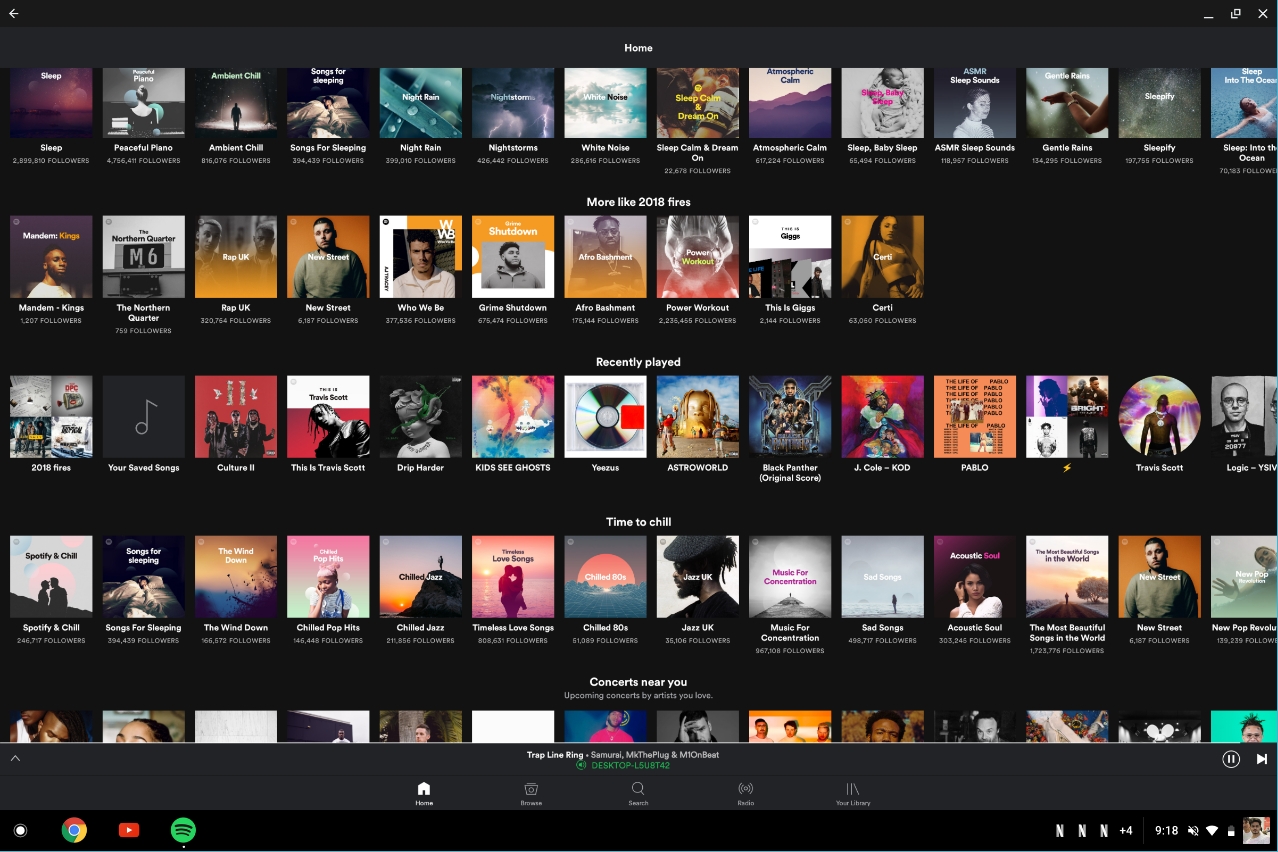
Another problem with Android apps is that they don’t integrate with the Chromebook platform so well. One major example is Spotify for Android. The app works quite well, apart from the usual annoyances with the app not scaling well for the bigger screen. But the main annoyance I had with Spotify is the playback control: when playing music on Spotify, you can’t control the playback with the hardware keys on the Pixelbook. This means you can’t change the track or play/pause the track with the hardware keys on the Pixelbook unless you do it with the Spotify app on focus or through the notification centre. You would think that’s a basic feature any OS would have, but this issue has been annoying me every time I use the Spotify app. Another issue that annoys me a lot is the Skype for Android app where pressing enter doesn’t actually send a message — instead, it creates a new line. It’s. Just. So. Annoying.
Here is one incident that happened which really made me question Google’s Android app integration on Chrome OS. I hadn’t used my Pixelbook for a day, and the next day I took it to a lecture. After a lot of problems with connecting the device to the Wi-Fi (more on that later), I eventually got online and boom: notifications after notifications after notifications. If you have ever turned on an Android phone after keeping it turned off for weeks or months, you would know that feeling. My Pixelbook literally just took off the second it connected to the internet: ping, ping, ping, ping, ping, nonstop notifications. All these notifications keep blasting in everytime I turn on the device, and it’s immensely annoying and obtrusive. Google really needs to come up with a way of working around this, or just simply delivering the notifications quietly to the notification center.
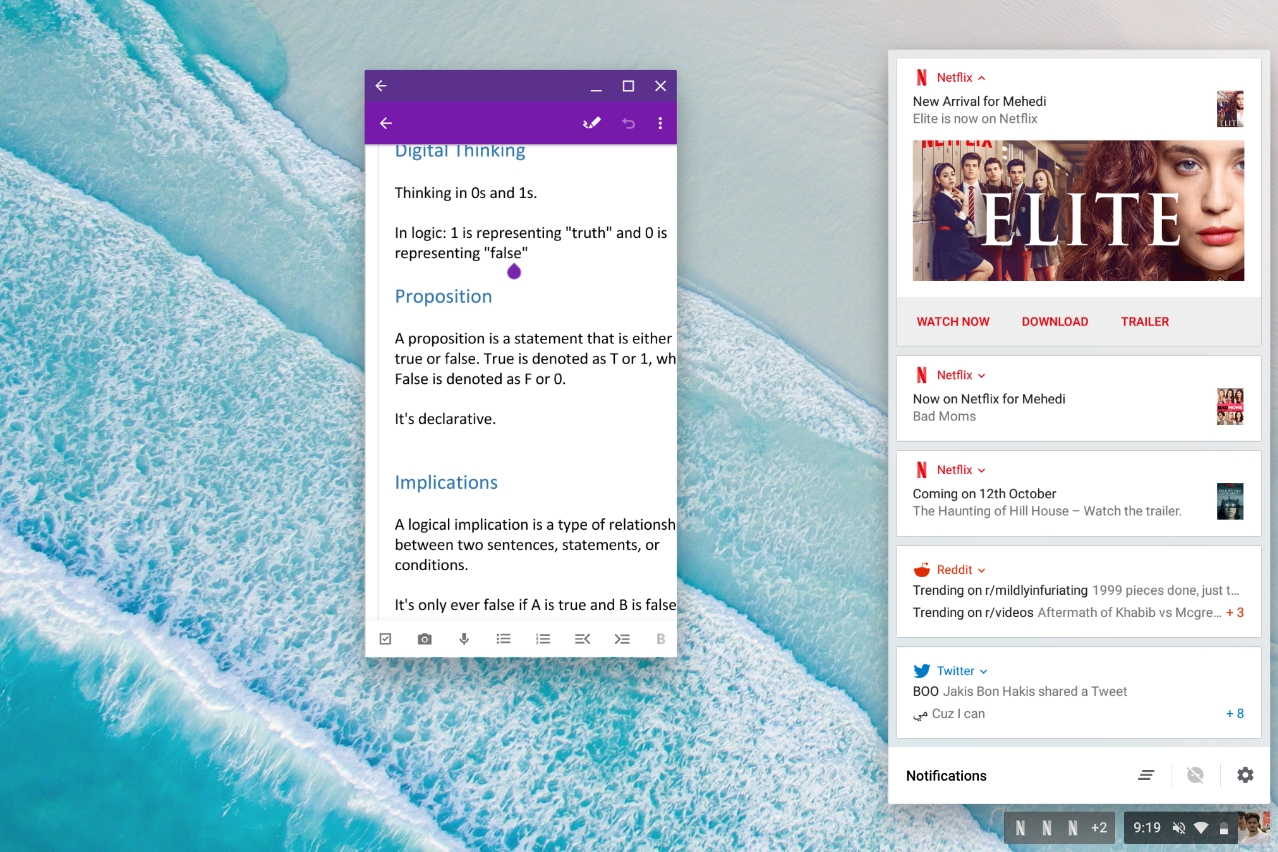
Most of this is obviously not Google’s fault, and it’s more about app developers updating their apps to work better with Chromebooks and the larger screens. Still, Android apps on a Chromebook are definitely the right direction for Google and the platform itself. Android apps fill in the gap that still can’t be filled in by web apps, and even though they might not be offering a full-on native experience, they still succeed to make up for that. The Google Play Store has millions of really useful, advanced apps that can help you get a lot out of your Chromebook platform more than ever before. In the past, Chromebooks were limited to web apps, but these Android apps take Chromebooks like the Pixelbook to a whole another level. I mean, I would never buy a £1600 device if it was only able to run a browser and web apps. Android apps help change that.
And then there’s the dilemma of having to choose between an app’s Android and web versions. OneNote, for example, has an Android app that works pretty well, but the experience is more for the desktop on the web. OneNote Online has almost exact the same features, and it even feels much better to use than OneNote for Android because of the reasons explained earlier in the story. I have been using OneNote throughout all my lectures, and using OneNote on the web feels much better than the Android app, unless you are using the touchscreen. The same applies to apps like Spotify, with the web app scaling much better to larger screens. You will probably find yourself in a similar situation for your favorite apps, even with things like Twitter — you could either use Twitter’s web app, TweetDeck, or stick to Twitter for Android which looks horrendous when in full-screen.
All of this leads to a massive mess where you are constantly switching between web apps and Android apps. You might be using Word for Android for your documents, and then switch to OneNote on the web — hidden somewhere between all your other Chrome tabs — to take notes. There really isn’t a better way of organising such things, and it can get a little annoying to constantly switch between the different variants of apps, especially when the features vary across the different versions. Picking which one you actually want to use is quite challenging too — and yes, I may be picking on little things here, but these little components of a system do really matter to the end user. At the end of the day, though, if you are only using Chromebook to take notes in school like me, you probably wouldn’t care a lot about OneNote on Android missing the ribbon over OneNote on the web, or Skype for Android not sending your message when you press enter.
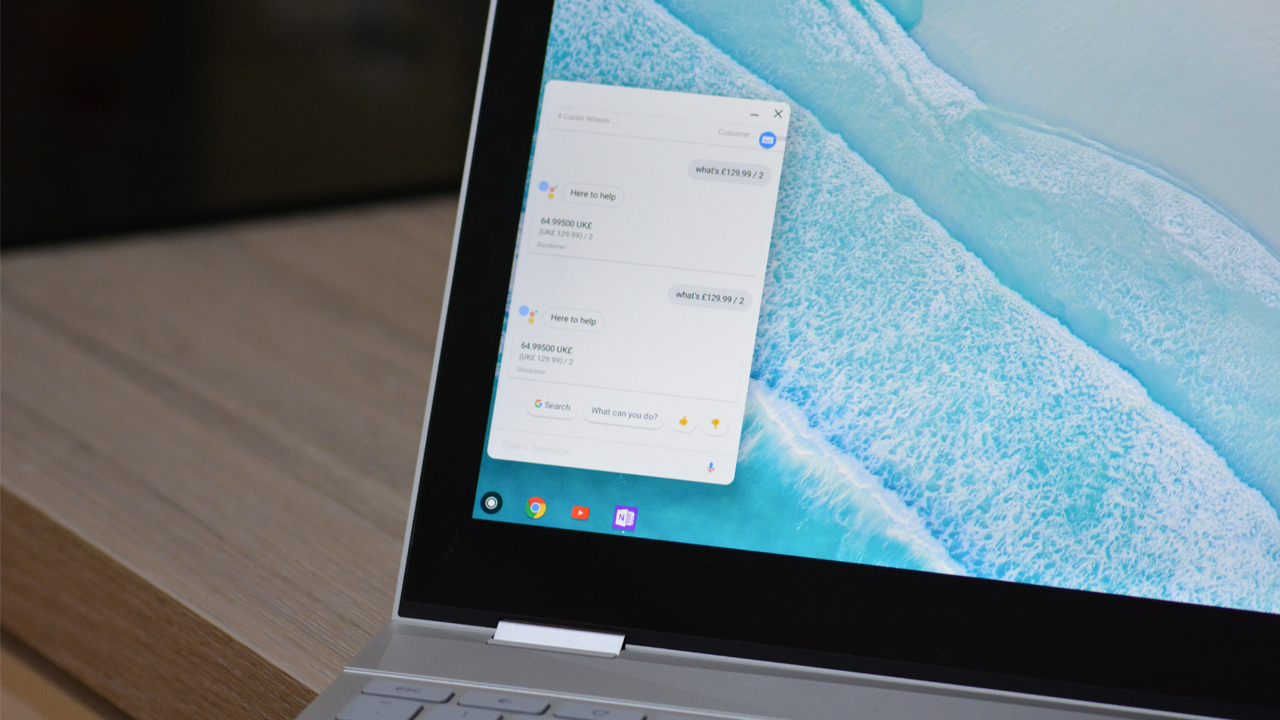
One thing I would like to mention is the fantastic Google Assistant integration on the Pixelbook. There’s a dedicated button to access the Assistant on the device, letting you get access to Google’s rapidly-improving personal assistant anytime you want. Although I haven’t been a huge fan of personal assistants like Cortana and Siri on computers, Assistant turns out to be actually useful. Since Assistant uses Google’s brains, it is really handy when researching for an assignment or project. I found myself constantly hitting the dedicated Assistant key and asking it questions related to my assignments, and most of the time I was able to get an answer without having to open up Google itself. Assistant is also really good with other things like controlling your music playback, so I was kind of able to get around the issue with Spotify for Android I mentioned earlier using voice control, but that’s, of course, impossible when I am in the library. Either way, Google deserves a praise for the way Assistant is integrated into the Pixelbook.
There are some things I would like Google to improve as it continues to develop the Chromebook platform, though. One thing is the system UI — right now, it’s all quite flat and looks very minimalist. Sometimes it even gets to the point where the UI is so simple and touch-based, you often feel like just using the device as a tablet rather than with the keyboard and mouse. I did try out the developer channel of Chrome OS and Google is cooking up some fantastic design changes on that front, so I am happy to report things are going to get better soon. I love the way Google is tweaking up everything in the updated interface, and I’ll try to give you guys a closer look at the updated UI when it reaches the general public. The system settings still need a lot of work, though — right now, they are housed within the Chrome browser and there’s a lot of wasted space in the interface that could be used much better for a 2-panel settings UI. Having to keep switching between the different categories of settings is frankly very annoying — I mean, this is not a phone with a 5-inch screen display, Google. There’s a bunch of space for a much better-implemented settings UI that really makes use of all the space.
There are a couple of other low-level issues with the Chromebook platform. Take the file manager, for example. It is incredibly limited and the UI is in no way supposed to be used with a keyboard and a mouse. It’s almost like Google just took things from Android, and implemented on Chrome OS without thinking about the keyboard and mouse. Even then, the default file manager in Chromebook is quite simple, making file management a real pain. Then again, Google expects you to store most of your things on the cloud when you are using a Chromebook, so you won’t be using the file manager quite a lot apart from when you are downloading files, etc. It’s a little annoyance that Google really should focus on in the future, especially when it’s trying to take on Windows and Mac where the file managers are miles ahead in terms of functionality.
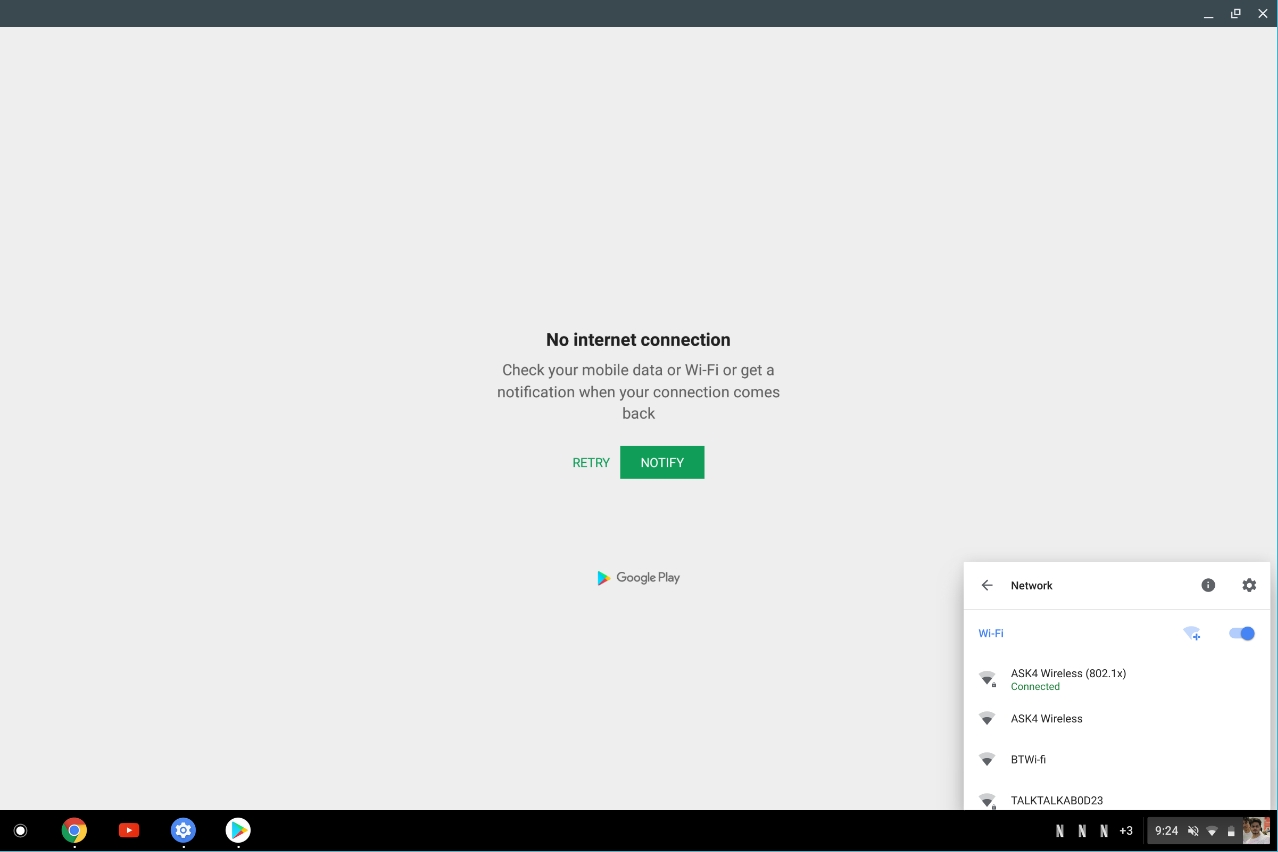
Remember the network issues I mentioned earlier? Let’s talk about that. Ever since I moved out for my university, I have had some real issues connecting the Pixelbook to the internet. My accommodation doesn’t have a direct WiFi connection — instead, you have to go through this manual setup portal and login after you connect to the WiFi to actually get a working internet connection. All of that works well, except when I try to use Android apps. For some odd reason, none of the Android apps work when I am connected to my student accommodation’s WiFi network. Web apps work just fine, and the device itself says its connected to the internet, but for some reason, Android apps refuse to work. That’s just one of the problems I had with the WiFi connectivity — when trying to get my Pixelbook connected to my university-wide WiFi network, I actually had to manually install some certificates, for example. Instead of just directly connecting to the Eduoroam network like my MacBook Pro, I had to download two different certificates with my phone’s hotspot, restart my device, and then actually connect to the network. I honestly have no idea who to blame here — the WiFi networks I am connecting to, or Chrome OS’ WiFi connectivity.
Put simply, it’s been a massive hassle getting this thing to connect to the internet ever since I started using the device during my lectures. Eduoram is supposed to be the most widely used network across most universities, at least in the UK, so if your university uses that, you will have to go through the same trouble like me on your Chromebook. Google advertises Chromebook as a platform that doesn’t have a bunch of weird system errors like Windows and Mac, but that’s simply not true. Sad, I know.
And that really sums up the Chromebook experience. It’s a simple, functional system that works perfectly until something breaks and it has zero clue how to deal with it. The OS itself may be out for years but it’s still in its early stages, struggling to deal with minor things that often lead to a poor experience. In my one month of use, there’s been loads of ups and downs with the Pixelbook — sometimes I fell in love with the simplicity of the system and sometimes I simply hated how poorly designed the system settings UI is. Although the Android apps integration is not perfect, these Android apps made the Pixelbook far more bearable than it would be with just web apps. I prefer web apps quite a lot, and spend most of my time on them, but Android apps fill in the gap where web apps simply tap out because of the lack of the tech and power of required.

So would I buy a Chromebook in 2018 as a student? Yes I would. The Chrome OS platform has come really far from the early days, and even though it’s not perfect, Chromebook devices are still fantastic for students. I realise my experience with the device wouldn’t be considered particularly positive, but that’s the perfect anecdote here. If you don’t care about little things and just want something to take notes on, do some research, or make some presentations on, a Chromebook is perfect.
Would I spend £1000+ on a Chromebook, though? Nope. When I am spending so much on a computer, I expect it to at least connect to the internet without me having to install a bunch of certificates. When I am spending so much for a computer, I expect it to at least run apps that properly scale to the display size. When I spend so much on a computer, it really needs to at least have working playback control with the most popular music streaming service in the world. Don’t get me wrong, the Pixelbook is a fantastic device hardware wise — it’s one, little, cute laptop that could do amazing things if it wasn’t restrained by Chrome OS. And maybe, just maybe, it won’t be restrained in the future as Google is expected to introduce the ability to dual boot Windows 10 soon on Pixelbooks. Would that make the Pixelbook more compelling? I, for one, think it would.
Conversation 30 comments
-
Stooks
<p>"<span style="color: rgb(0, 0, 0); background-color: rgb(255, 255, 255);">I have been using the laptop for a few weeks now"</span></p><p><br></p><p><span style="color: rgb(0, 0, 0); background-color: rgb(255, 255, 255);">I am truly sorry.</span></p>
-
chump2010
<p>I just wanted to thank you for this review. It felt neutral, like you had no axe to grind. It was just your personal experience, but very thoroughly documented, both the good and the bad. Many thanks once again. </p>
-
PeterC
<p>I really like the fact the article is written by Mehedi using the product at Uni and writing up the challenges/pros/cons of such a user case scenario by someone whose at Uni doing it! Simple. Effective and I'd like more please as this gets under the hood of helping my kids out. </p>
-
PeterC
<blockquote><em><a href="#351535">In reply to Mehedi:</a></em></blockquote><p>Get Paul and Brad to sort you out with equal spec’d surface pro, iPad Pro and pixel slate launched today and give them a long term real life review when pitted against each other in actual Uni projects. Be fascinating to read your findings. </p>